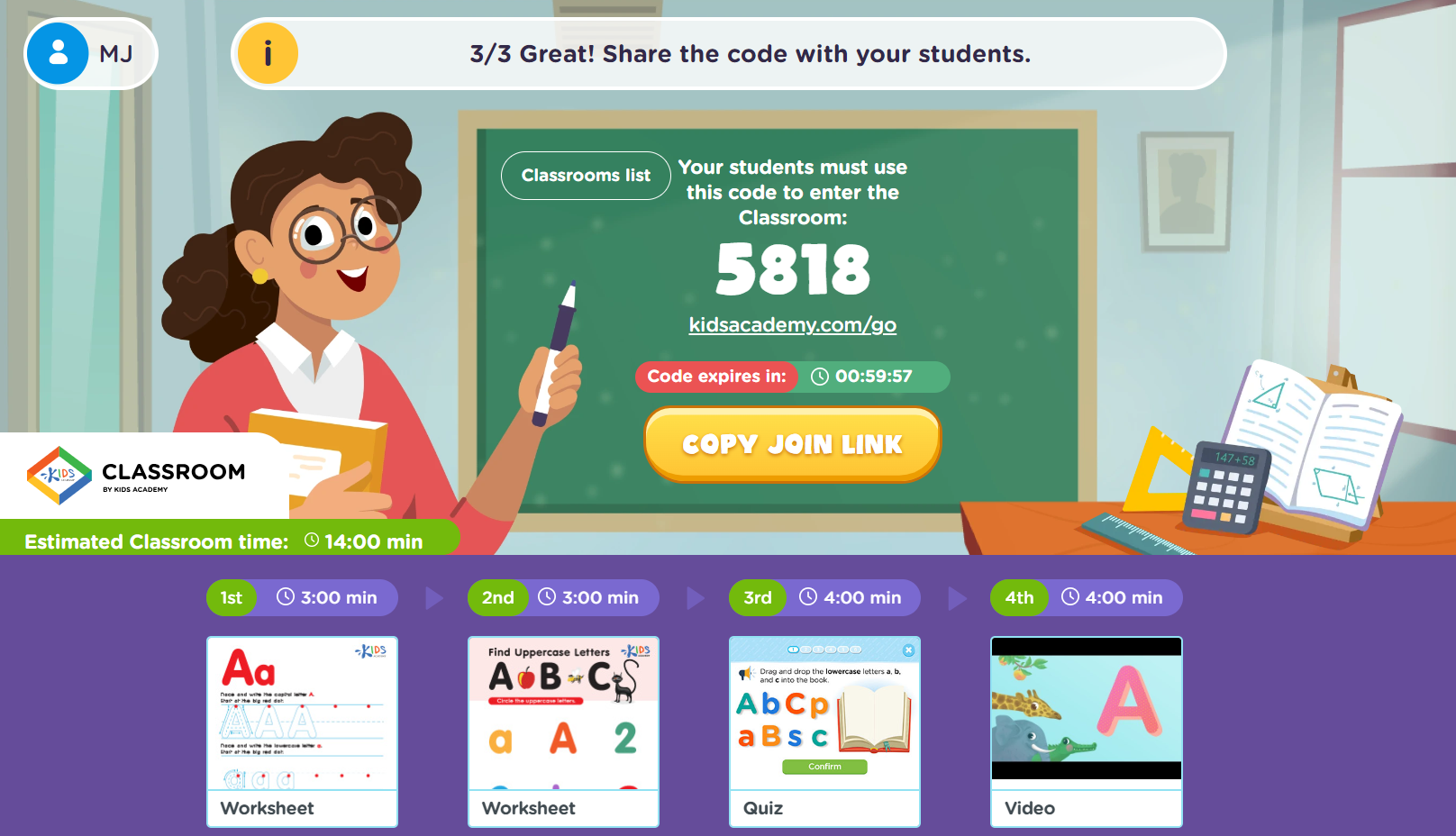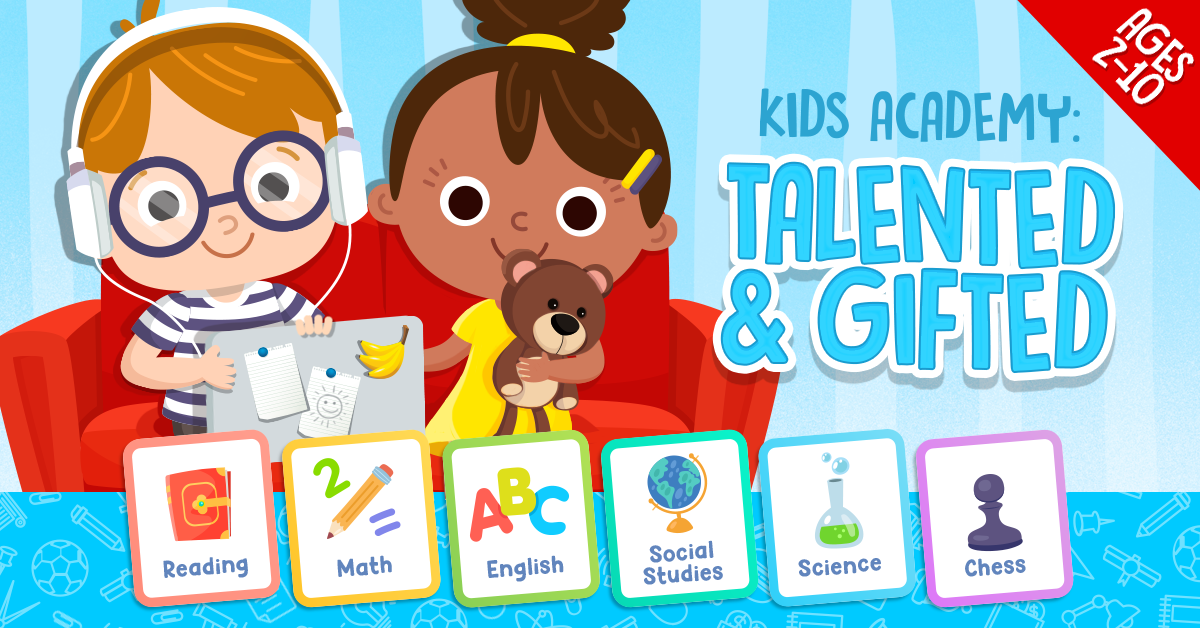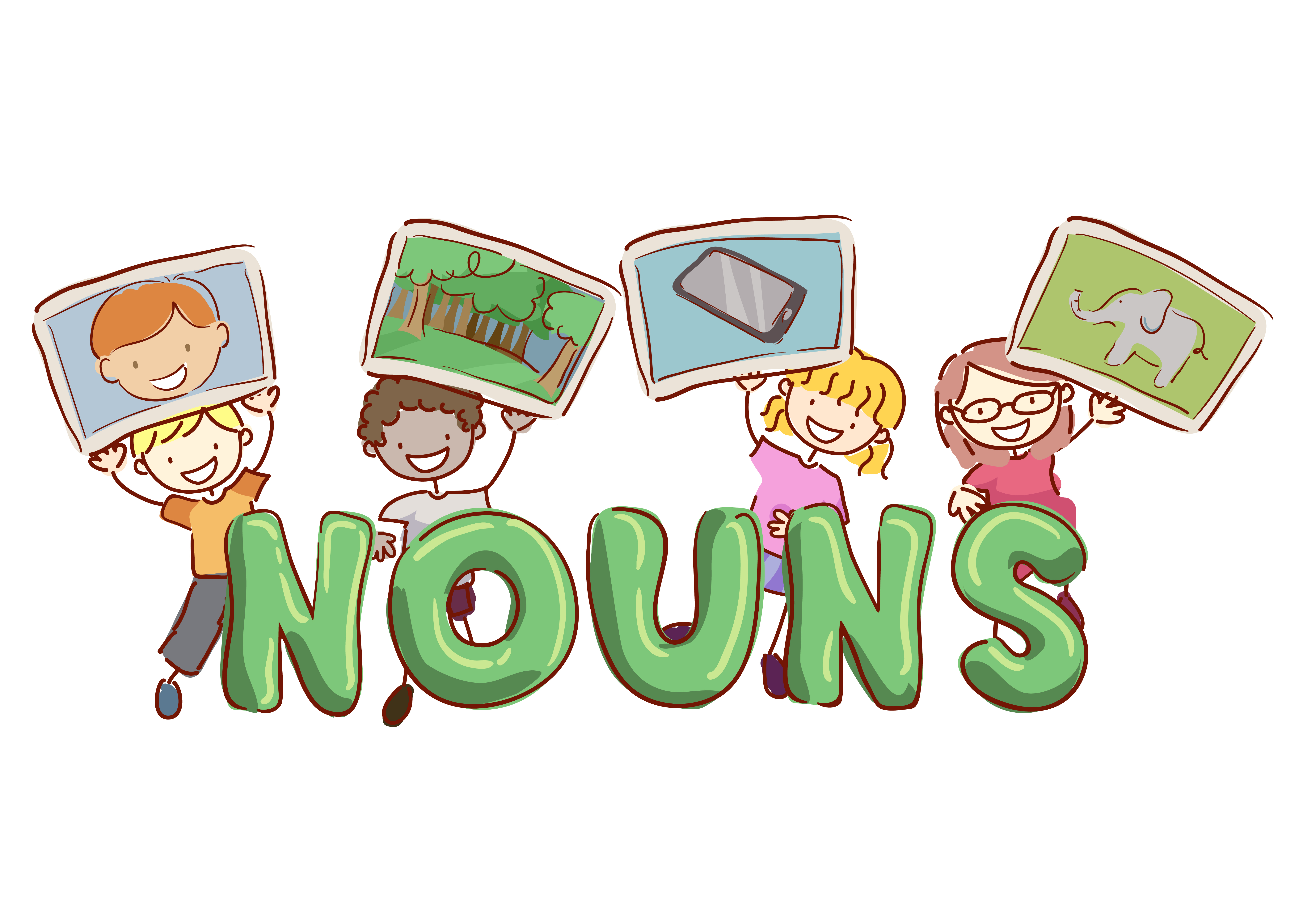Elementary Phonics worksheets activities for Ages 3-5
11 filtered results
-
From - To
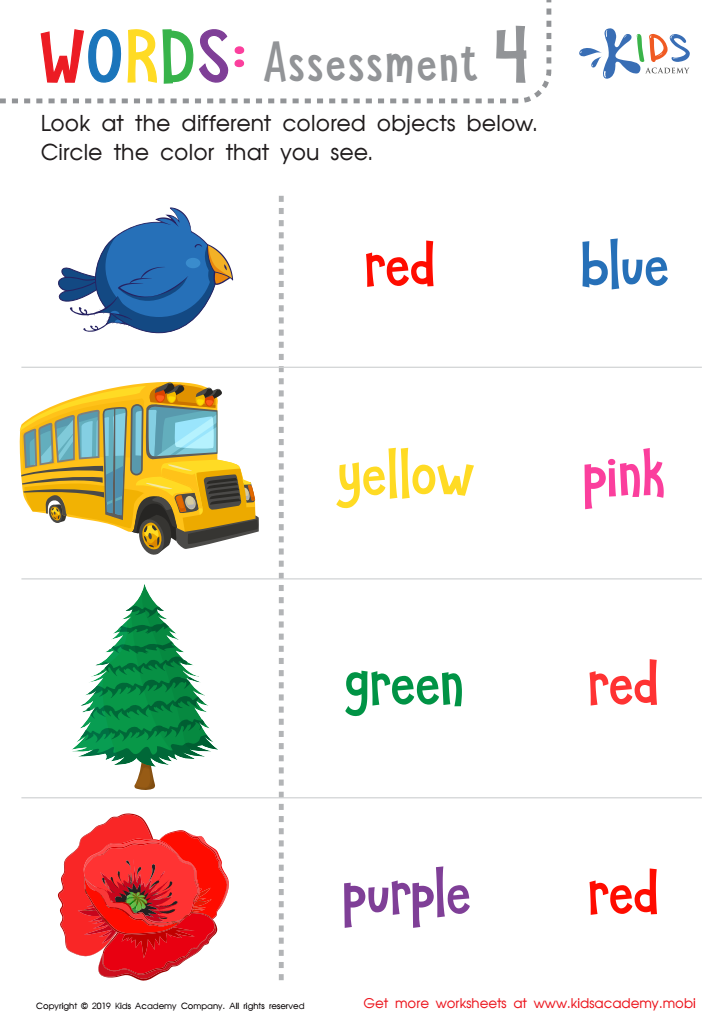

Words: Assessment 4 Worksheet
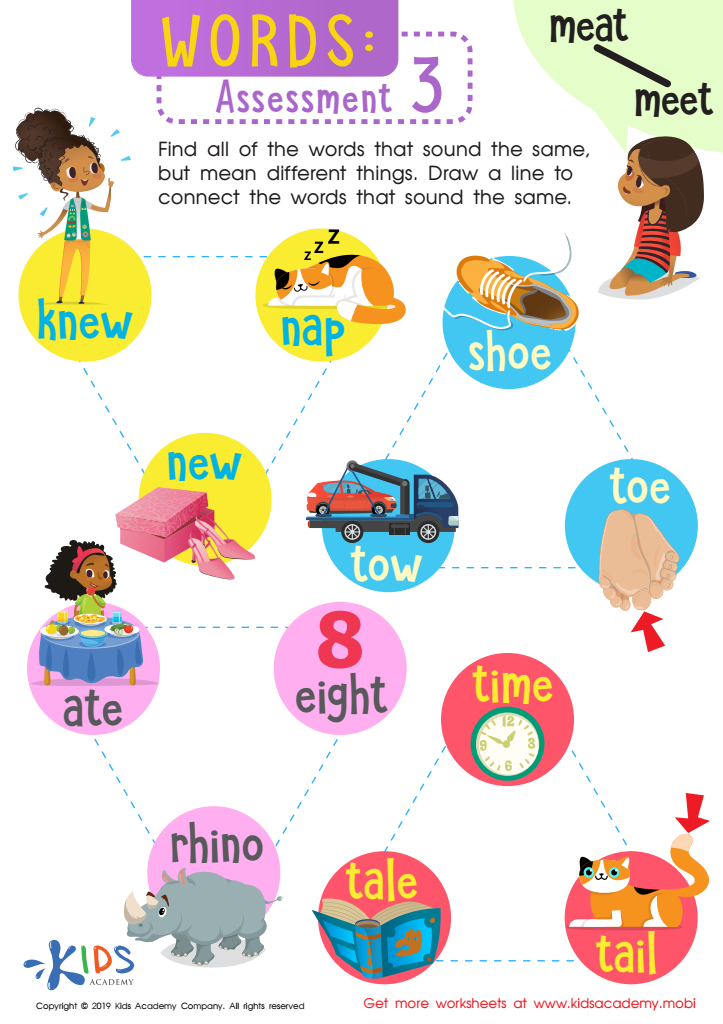

Words: Asessment 3 Worksheet
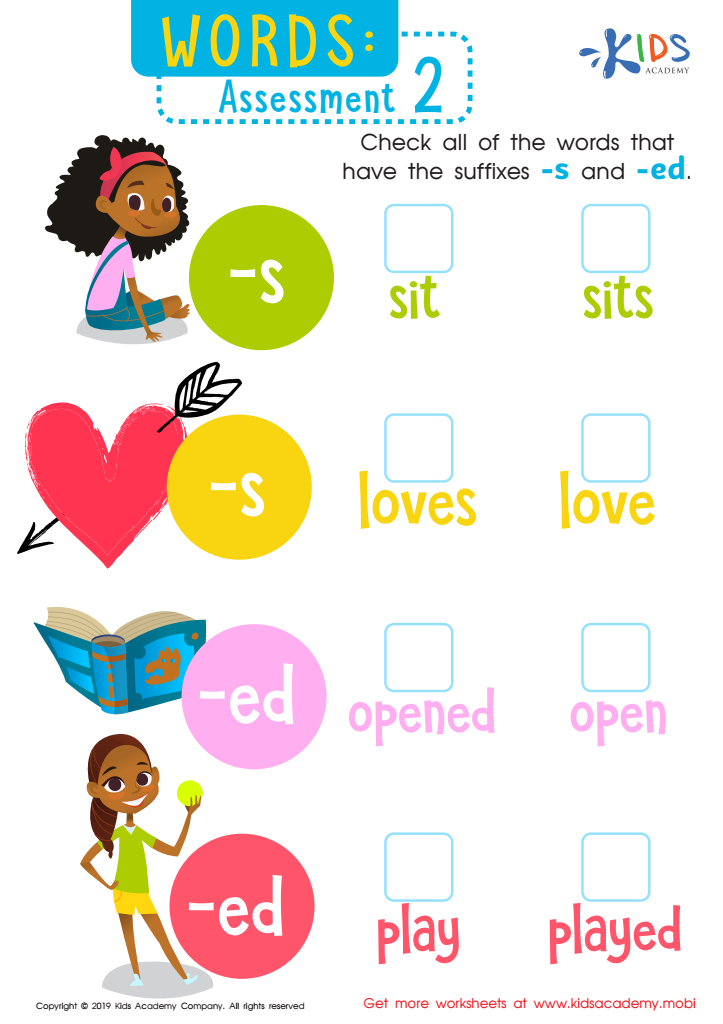

Words: Assessment 2 Worksheet


Phonological Awareness: Assessment 3 ELA Worksheet
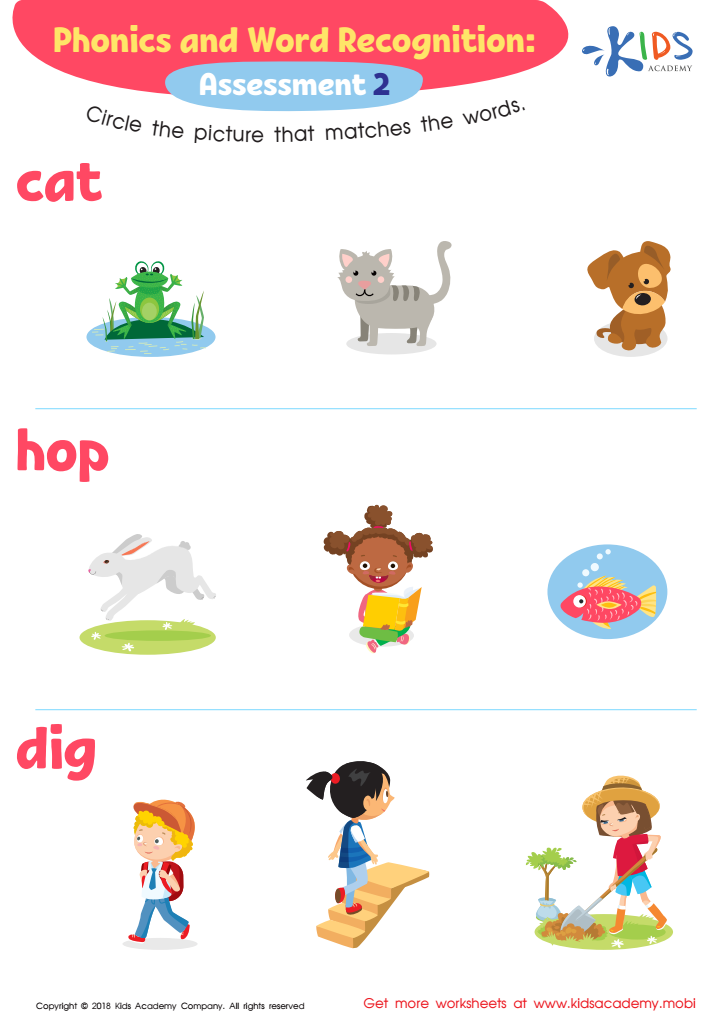

Phonological Awareness: Assessment 2 ELA Worksheet
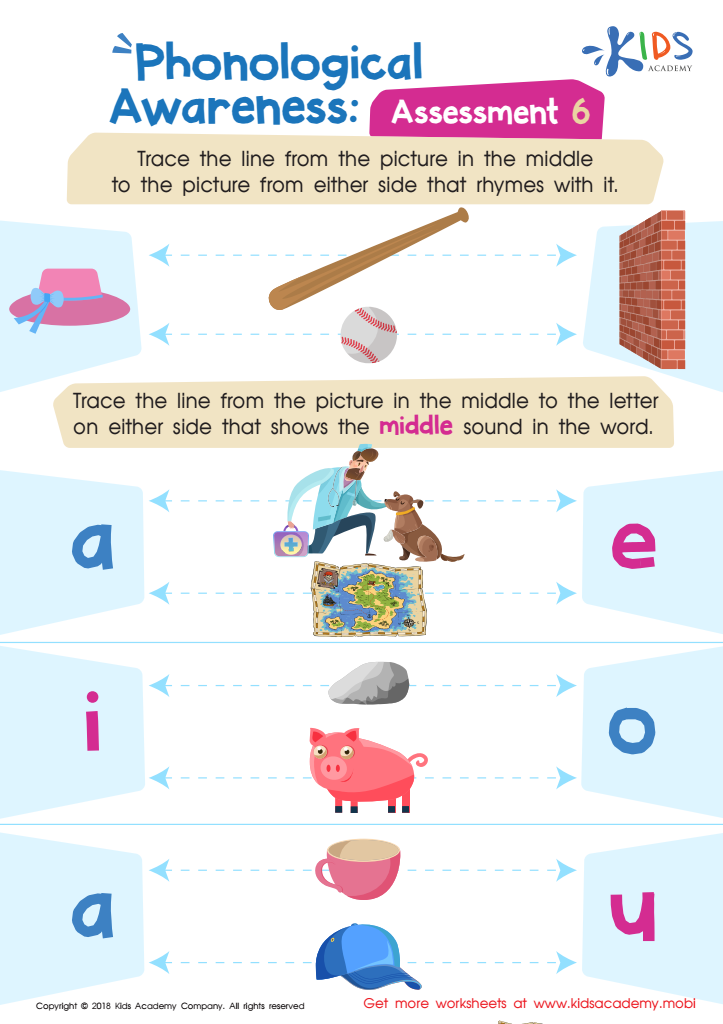

Phonological Awareness: Assessment 6 Worksheet
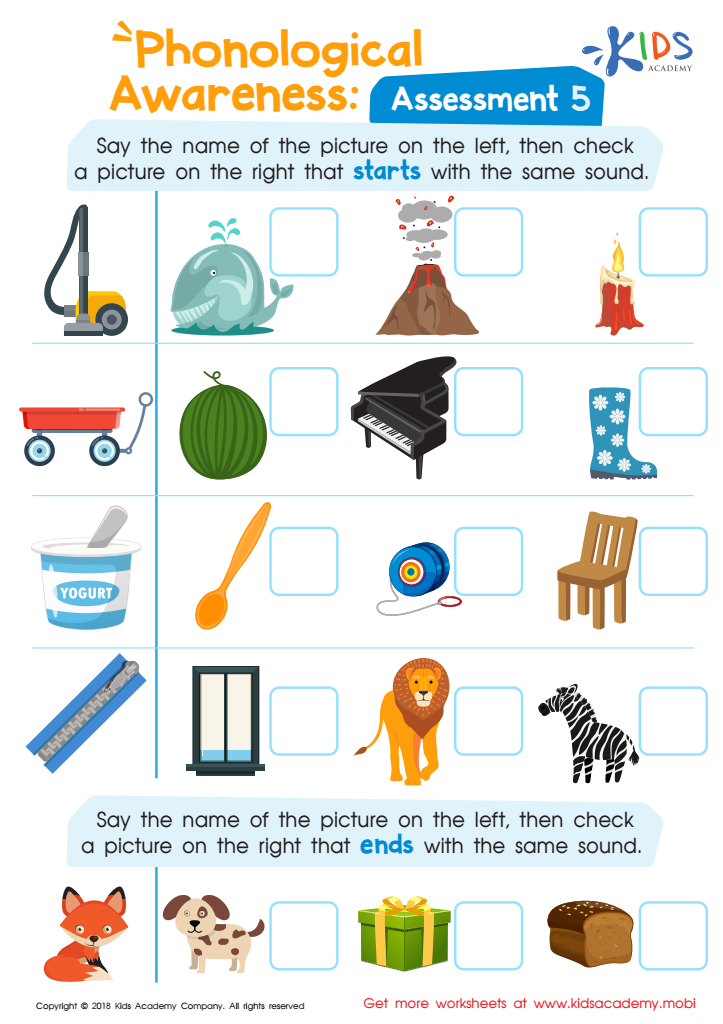

Phonological Awareness: Assessment 5 Worksheet
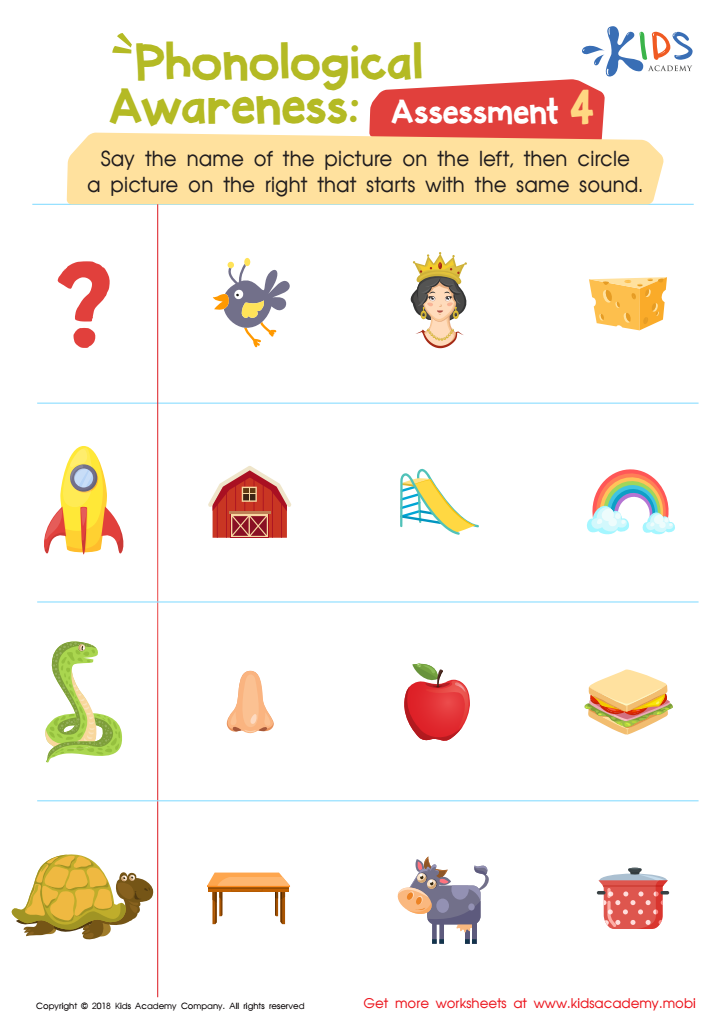

Phonological Awareness: Assessment 4 Worksheet
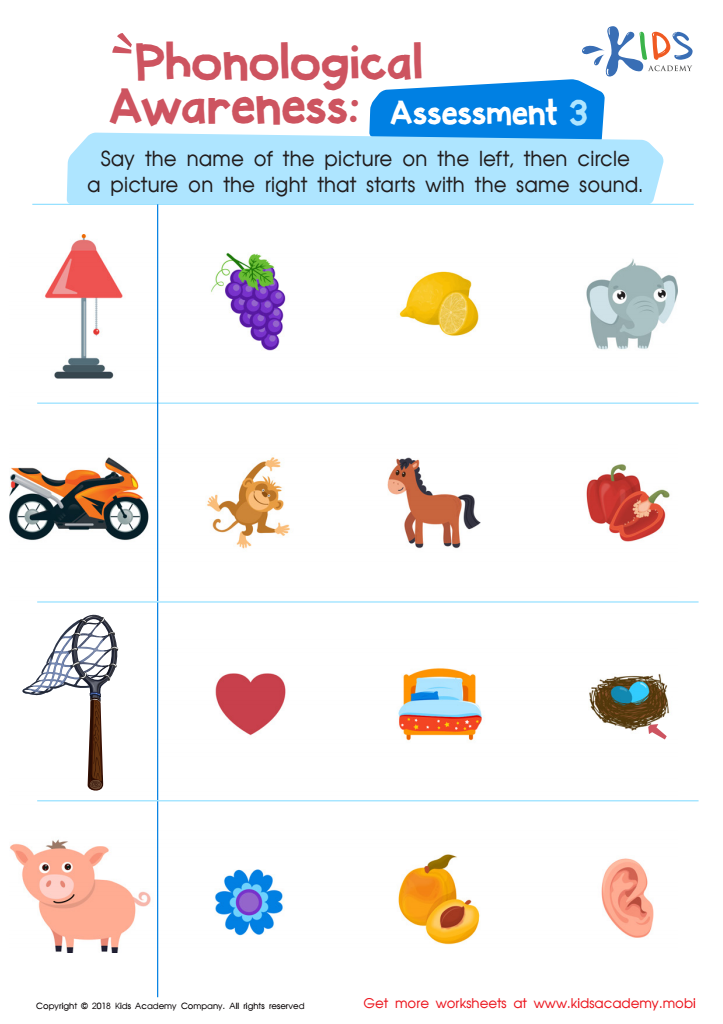

Phonological Awareness: Assessment 3 Worksheet
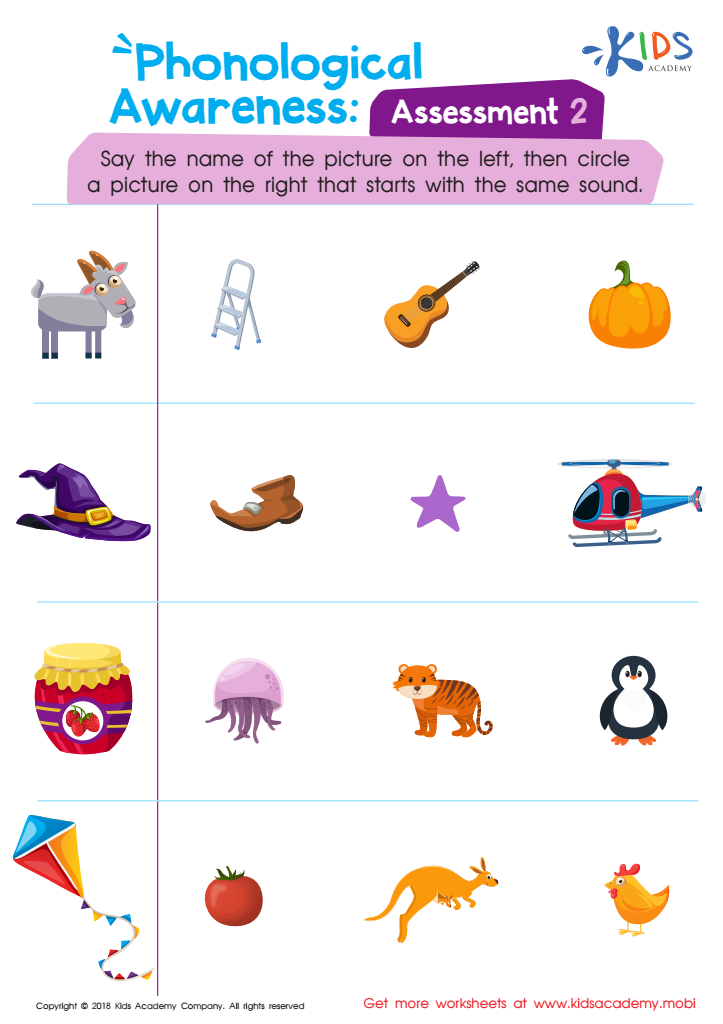

Phonological Awareness: Assessment 2 Worksheet
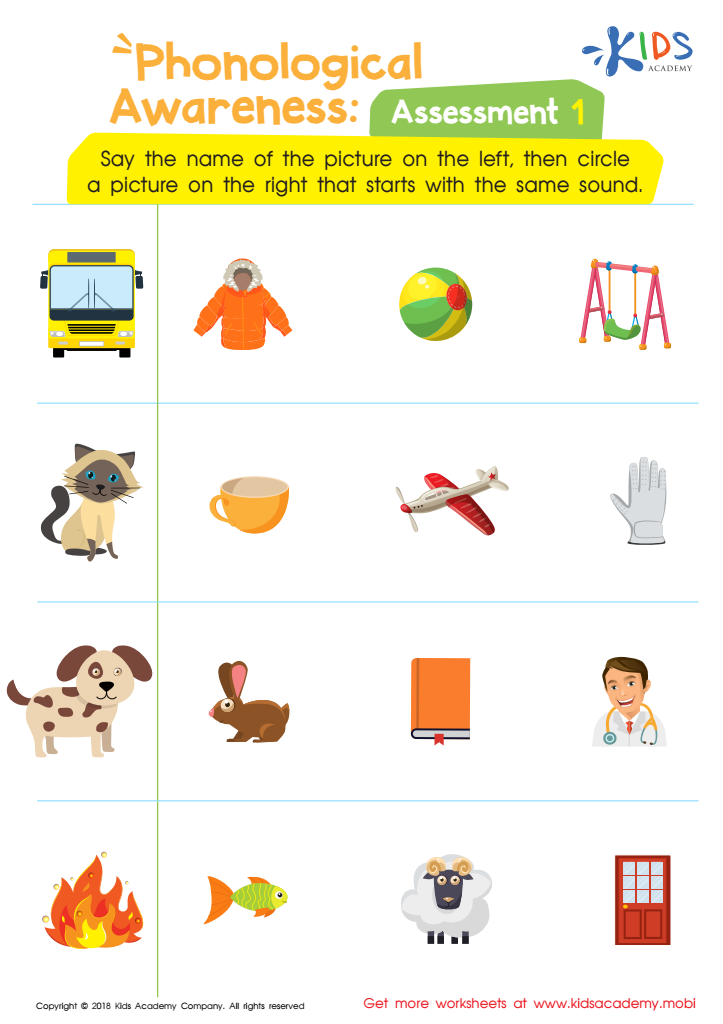

Phonological Awareness: Assessment 1 Worksheet
Elementary Phonics worksheets activities serve as a cornerstone for early literacy development among young learners. These activities, meticulously designed to introduce and reinforce phonetic skills, offer a structured and engaging approach to reading and writing. Their utility in the elementary classroom or at home cannot be overstressed, as they cater to the foundational needs of budding readers and writers in several compelling ways.
First and foremost, Elementary Phonics worksheets activities provide a visual and tactile learning experience. This multisensory approach is crucial for young learners who benefit from seeing, touching, and manipulating letters and words as they explore sounds. Such hands-on learning not only enhances memory retention but also keeps children engaged and interested in their lessons.
Moreover, these activities are tailored to address the individual learning paces and styles of children. With a variety of worksheets available, educators and parents can select those that best fit the learning needs and interests of their students or children. Whether it's matching games, fill-in-the-blanks, or cutting and pasting exercises, each activity is designed to reinforce phonetic concepts in a fun and interactive way.
Elementary Phonics worksheets activities also play a vital role in building confidence. As children successfully complete these worksheets, they experience a sense of accomplishment that spurs them on to tackle more complex reading and writing tasks. This positive feedback loop is essential for fostering a love for learning and literacy that can last a lifetime.
Importantly, these activities lay a solid foundation for future literacy skills. Understanding the relationship between sounds and letters is paramount for reading fluency and comprehension. By starting with phonics, children develop the skills necessary to decode words, which is a critical step in becoming proficient readers and writers.
In summary, Elementary Phonics worksheets activities are not just another task for young learners to complete. They are a crucial educational tool that enriches the learning environment by providing interactive, individualized, and confidence-building resources that pave the way for literacy success.

 Assign to My Students
Assign to My Students





